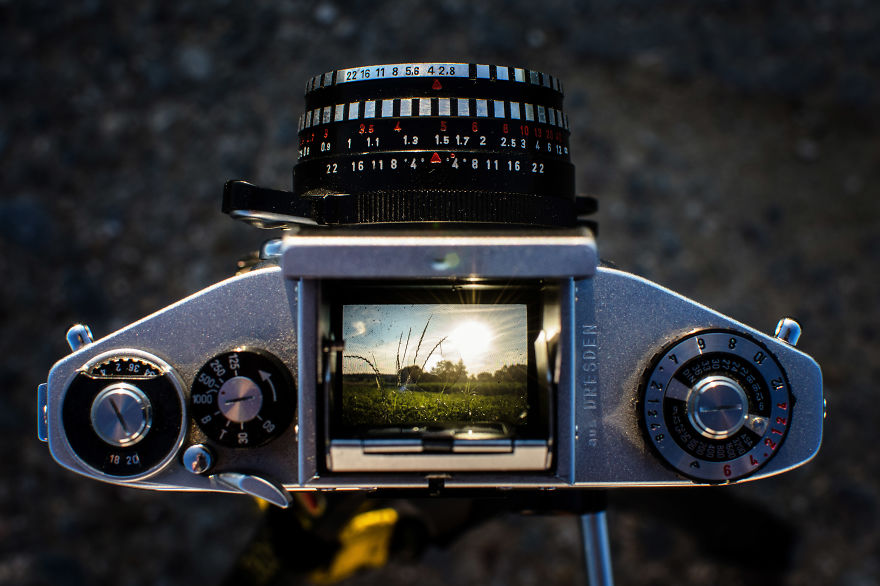

Whereas an EVF continuously consumes power while it’s on. It works by the image sensor capturing light and displaying the information on a small electronic display in the viewfinder.Īn overlooked difference between an optical vs electronic viewfinder is battery consumption. Electronic ViewfinderĪ common viewfinder design is the electronic viewfinder (EVF) or also known as a digital viewfinder. Most cameras allow a standard correction range of -3 to +1 diopters. The dioptric adjustment allows fine-tuning of the viewfinder focus and can be adjusted to a photographer’s eyesight. The viewfinder has a small dial or knob known as the dioptric adjustment, usually found right beside it, to adjust the focus. This is because the focus of the viewfinder has not been adjusted to your eyes, glasses, or contacts. Often times when you first look into a viewfinder, the image may be blurry. Just because you may have 20:20 vision or corrected vision doesn’t mean there is something wrong with the viewfinder. These types of viewfinders lack a pentaprism or pentamirror and the final image is slightly different than what was displayed in the viewfinder. Some compact cameras have a parallel view: what you see is different from the light that passes through the lens and what the camera sees. Not all viewfinders are optically constructed the same. The advantage of a pentaprism is there is less light reduction through the reflection stage resulting in a brighter image in the viewfinder. Pentaprisms are heavier and cost more money to construct than a pentamirror. On the other hand, lower-grade DSLRs use a pentamirror which is designed with mirrors and has air in the middle. Professional-grade DSLRs use a pentaprism which is made up of a solid, 5-sided prism which reflects light.
Viewfinder photographer iso#
Many camera models also display the camera settings in the viewfinder – aperture, shutter speed, and ISO – you know your exact settings when you press the shutter button.Īnd an unrealized advantage of looking through the viewfinder is having the camera body and lens pressed up against your body by bringing in your arms: this helps you stabilize your camera to reduce hand shake and produce sharper images. The focal points displayed in the image finder helps you autofocus the image in real time. The light that goes through the lens reaches your eye and helps you frame the image correctly.Īdditionally, the viewfinder also displays important information. The benefit of the optical viewfinder is you see what the camera sees. This is accomplished by light passing through the lens (TTL) and reflecting off a reflex or relay mirror, then passing through a pentaprism or pentamirror, and ultimately going through the viewfinder into the photographer’s eye. How the Optical Viewfinder WorksĭSLRs use an optical viewfinder (OVF). The viewfinder plays an important part in photography as it helps photographers to accurately aim and make an image. What you see in the viewfinder is ideally what the camera sees and the image that will be captured by the image sensor. The camera viewfinder is a small, rectangular display window found on top of the camera which a person looks through to help them compose a photograph. Without realizing, they may have not paid attention to the settings of the viewfinder which can impact the quality of the image. They then review the image on the LCD screen to verify if the image meets their expectation.

Viewfinder photographer how to#
If you’re just learning how to use your new camera, Viewfinder is the perfect resource to help you hone your skills.One of the first requirements a person does to test a camera is to look into the viewfinder to take a photo. Smartphone and DSLR friendly: from stabilized long exposure to smart phone snaps, find the shot for you. Equipment and settings: pack the right equipment to get the best shot possible and learn which settings to use to capture the light. Sunrise, sunset, blue hour, a two week period in late February? Know before you go. Timing is Key: knowing when to shoot for the best lighting is key to a great photo. We’ll even provide instructions on where to park. Find the shot: our GPS powered maps guide you to the exact standing position for the best shooting perspectives. Our photography guides include everything you need to know to get the shot. Whether you are traveling to new cities or eager to practice your photography locally, Viewfinder guides will help you take beautiful pictures.
Viewfinder photographer professional#
Viewfinder photography guides show you the world through the lens of professional photographers.


 0 kommentar(er)
0 kommentar(er)
